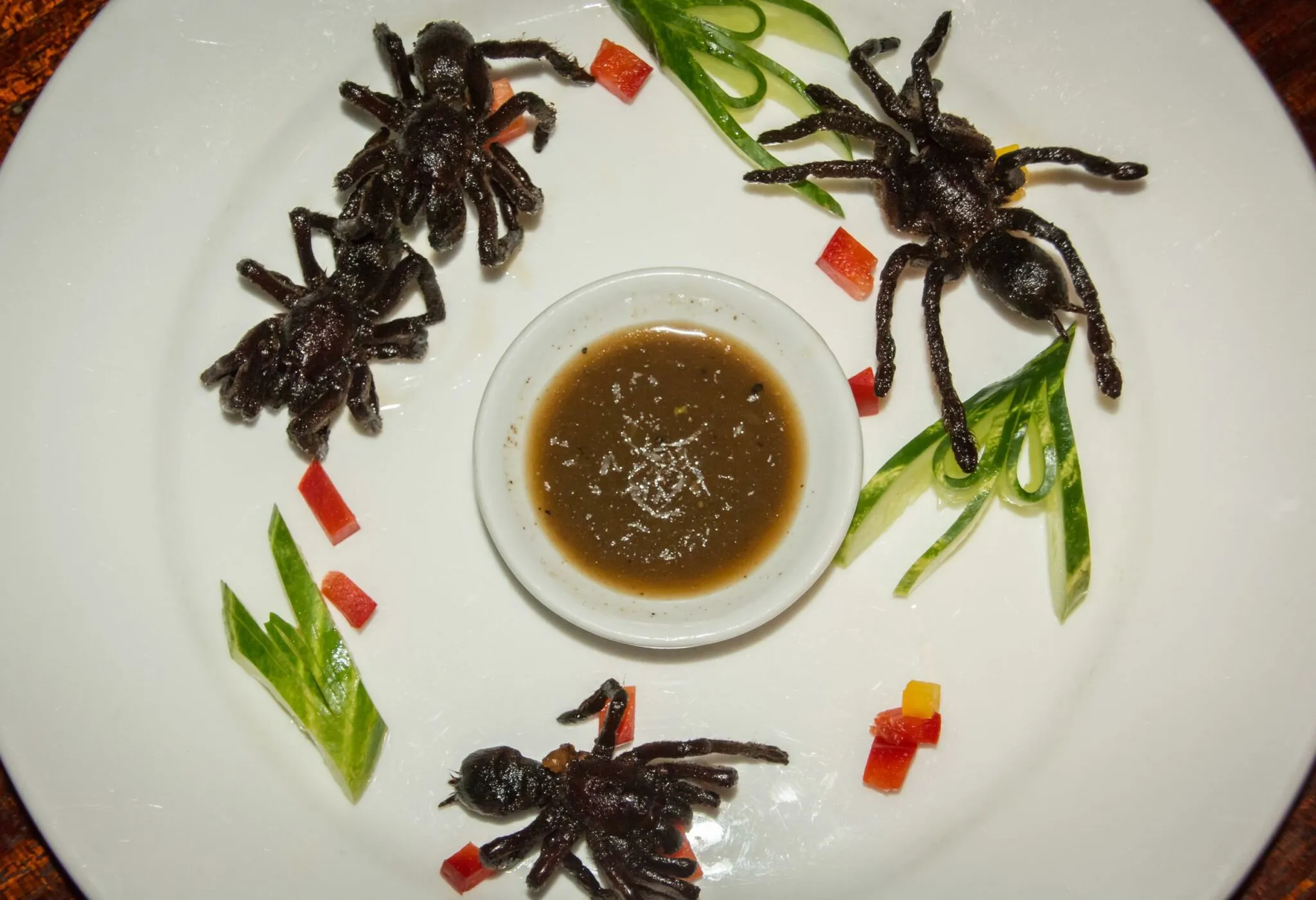What are Thai Fried Tarantulas
Thai fried tarantulas, or ‘แมงมุมทอด’ (maengmum thot) in Thai, are a popular street food delicacy in Cambodia and Thailand, particularly in areas where these arachnids are readily available. The practice of eating tarantulas, especially the species commonly known as the ‘A-ping’ tarantula, is a tradition rooted in cultural practices. These insects are not just seen as a food source, but they also hold a certain cultural significance, often associated with traditional diets and survival strategies. In regions where they are consumed, the tarantulas are often caught from their burrows in the ground, usually during or after the rainy season when the spiders are more active and easier to find. The consumption of these tarantulas is a testament to resourcefulness and adaptability, and they have become an iconic representation of the local culinary landscape and food culture.
Origin and Cultural Significance
The tradition of consuming Thai fried tarantulas can be traced back to the Khmer people of Cambodia, who have a long-standing history of eating spiders, particularly during times of famine or scarcity. Over time, this practice spread and became a part of the culinary landscape, eventually becoming a street food staple. The cultural significance of eating tarantulas goes beyond mere sustenance. It is a symbol of resilience, resourcefulness, and the ability to adapt to challenging circumstances. For many, it represents a connection to their ancestors and a deep appreciation for the natural resources around them. The preparation and consumption of tarantulas are often communal activities, reinforcing social bonds and cultural identity. The dish also provides a unique cultural experience, and it has become a popular attraction for tourists and food enthusiasts looking to explore exotic flavors.
Where to Find Thai Fried Tarantulas
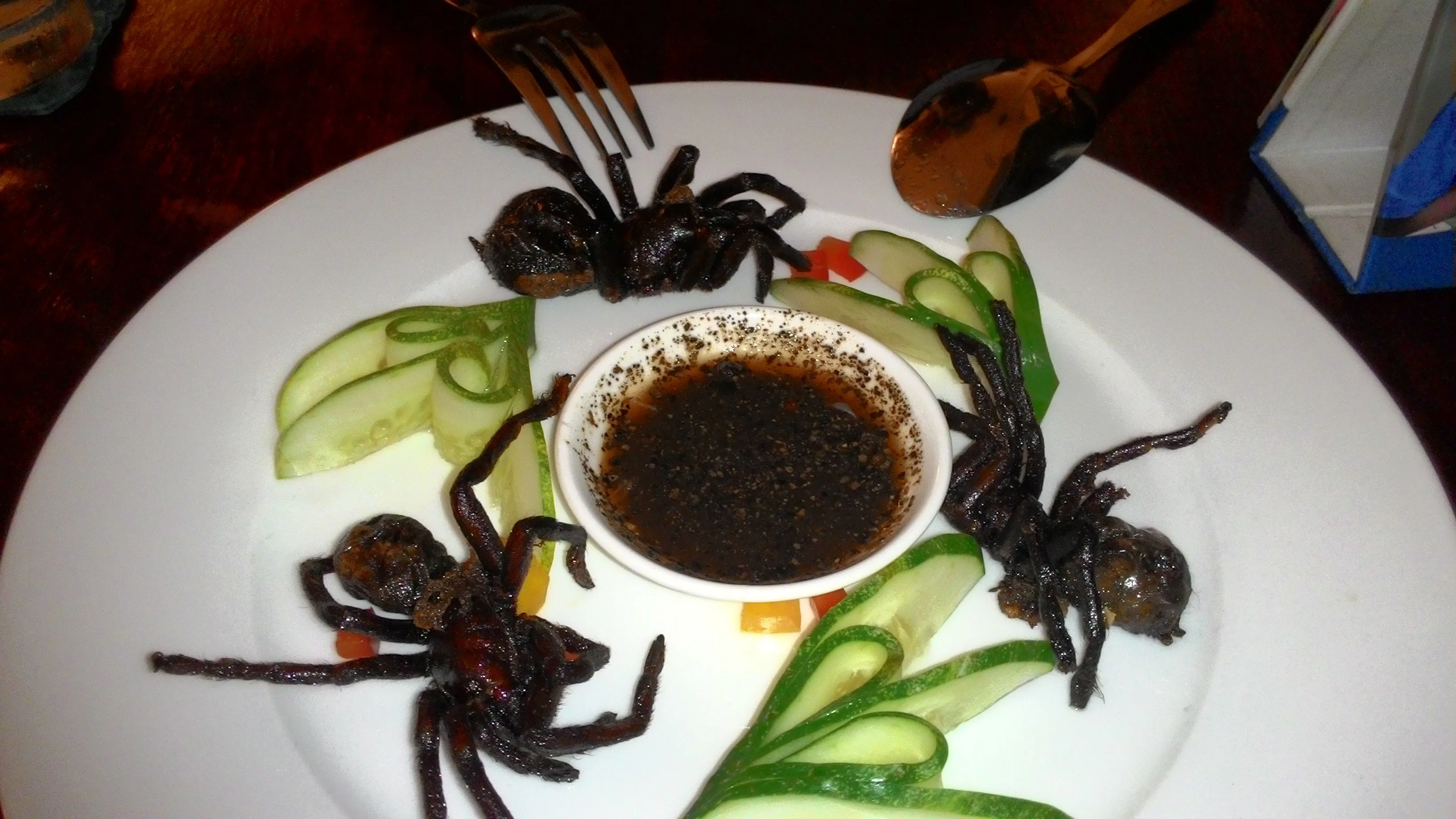
The primary regions where you can find Thai fried tarantulas are in Cambodia and Thailand, where they are a common sight in local markets and on street food stalls. In Cambodia, especially in the town of Skuon, tarantulas are a regional specialty, and the town is often referred to as the ‘spider capital’. Travelers can easily find stalls selling freshly fried tarantulas, which are cooked to order. In Thailand, you can find them at markets in the Isan region, which is the northeast of the country. Here, they are often seasoned with garlic, chili, and salt, giving them a unique flavor. While it is best to enjoy this unique dish locally, some specialty restaurants in other countries might offer tarantulas on their menu, but be prepared as they might come at a higher price.
The Preparation Process
Preparing Thai fried tarantulas is an intricate process that involves careful handling and a specific cooking technique. The journey from the burrow to the plate transforms these arachnids into a crispy, flavorful snack. The process requires expertise, from catching the tarantulas to cleaning and preparing them. The tarantulas are first caught, carefully cleaned to remove any dirt or unwanted parts, and then seasoned before being fried. The preparation is as important as the cooking itself, as it dictates the overall taste, texture, and safety of the final product. The entire procedure is a testament to the local knowledge, skills, and traditions associated with this unique culinary practice. When executed properly, the preparation ensures the delicious and safe consumption of this unusual delicacy.
Catching and Cleaning
Catching tarantulas is often a task for experienced locals familiar with the arachnids’ behavior and habitats. They are often found in burrows in the ground, and the process involves using specialized tools to coax them out gently. Once caught, the tarantulas must be cleaned thoroughly. This involves removing their fangs, gutting them, and washing them to get rid of any dirt. The cleaning process is critical, as it ensures the tarantulas are safe for consumption and removes any parts that could affect the taste or texture. This step also prepares the arachnids for the next stage of seasoning and frying. Skilled preparation not only improves the taste of the tarantulas but also ensures the safety of the consumer.
Seasoning and Frying Techniques
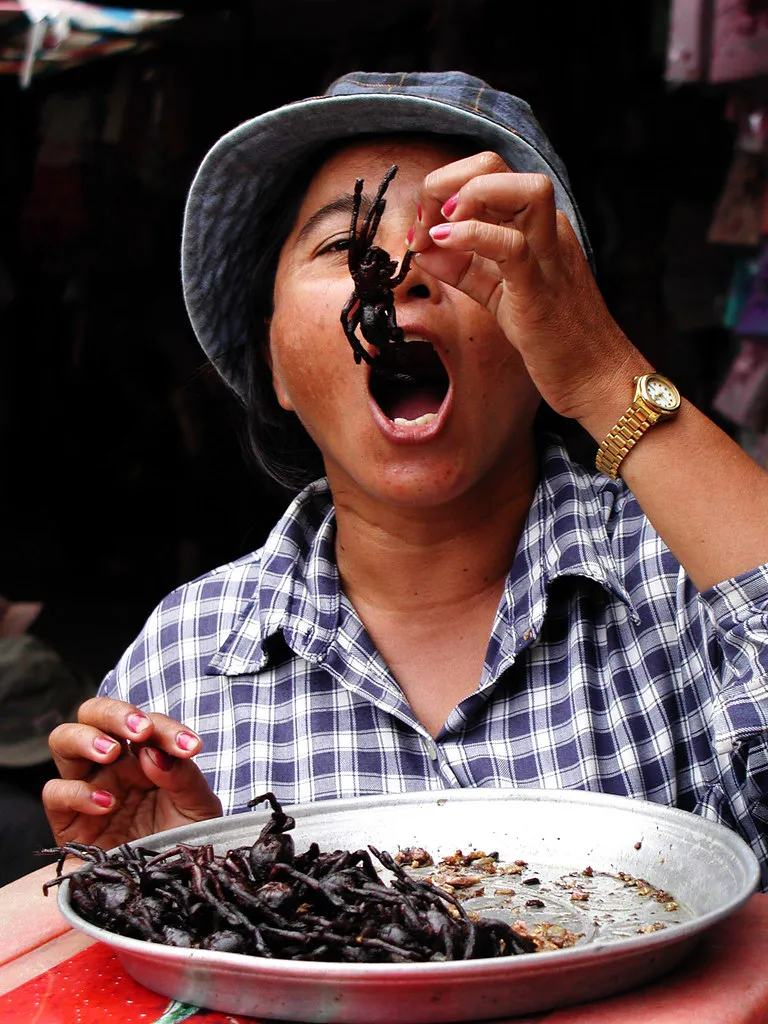
The seasoning and frying techniques are what truly transform the tarantulas into a culinary delight. Typically, the tarantulas are seasoned with a mixture of salt, garlic, chili, and sometimes sugar or MSG to enhance their flavor. This spice mixture not only infuses the tarantulas with flavor but also helps in creating a crispy exterior during the frying process. The cooking itself usually involves deep-frying the tarantulas in hot oil. The oil temperature and frying time are carefully controlled to achieve the desired texture: a crispy exterior and a tender, succulent interior. Some cooks might choose to fry the tarantulas twice to ensure they are crispy and fully cooked. The goal is to cook the tarantulas evenly and achieve a satisfying crunch. The flavor profile and texture make this unusual dish so appealing.
Nutritional Benefits
Thai fried tarantulas are not just a culinary adventure; they also provide a nutritional boost. They are a source of protein, essential nutrients, and minerals, which offer several health benefits. These creatures can be an integral part of a balanced diet, especially in regions where they are a traditional food source. It is not just a source of food but also offers a unique insight into the nutritional value of insects as an alternative source. They are a sustainable, readily available, and culturally significant source of nutrients. This perspective highlights the potential of insects as an important element in global food security, offering a sustainable alternative to conventional protein sources.
Protein Content and Nutritional Value
Tarantulas are a good source of protein, which is essential for building and repairing tissues in the body. The protein content in tarantulas is relatively high compared to many other food sources, making them a valuable dietary option, especially in areas where they are easily accessible. In addition to protein, tarantulas also provide various other nutrients, including fats, carbohydrates, and several vitamins and minerals. The fat content can vary depending on the preparation method, but overall, tarantulas can contribute to a balanced diet. The nutritional value makes them an intriguing alternative to traditional protein sources.
Vitamins and Minerals

Thai fried tarantulas contain essential vitamins and minerals that are vital for maintaining good health. They are a source of iron, which is necessary for carrying oxygen in the blood. They also provide zinc, which is crucial for the immune system and cell growth. Certain B vitamins are also present, contributing to energy metabolism and overall health. The specific vitamins and minerals can vary slightly depending on the tarantula species and its diet. These nutritional elements make tarantulas a well-rounded food option, supporting various bodily functions. Consuming this unique delicacy offers both a culinary experience and a nutritional benefit, making it an interesting food choice.
Taste and Texture
The taste and texture of Thai fried tarantulas are a unique culinary experience, appealing to both adventurous eaters and those seeking an exotic taste. The texture is a significant factor, with a crispy exterior and a tender interior, which is a contrast that many find appealing. The flavor profile depends on various factors, including the species of tarantula, the preparation methods, and the seasonings. Some describe the flavor as slightly nutty, with a hint of earthiness, while others note a resemblance to crab meat or chicken. The overall sensory experience is a blend of taste and texture, making it an unforgettable culinary adventure.
Flavor Profile
The flavor profile of Thai fried tarantulas is often described as having a unique and intriguing blend of flavors. The taste is often compared to that of other protein sources, such as crab meat or chicken, with a hint of earthiness. The seasonings used, like garlic, chili, and salt, play a major role in enhancing the flavors and providing a savory taste. The overall flavor is not overpowering but rather subtle, allowing the natural taste of the tarantula to come through. The flavor profile is also affected by the tarantula’s diet and its environment. The distinct taste of the Thai fried tarantulas is one of the main reasons why they are such a sought-after delicacy.
Texture of the Tarantula
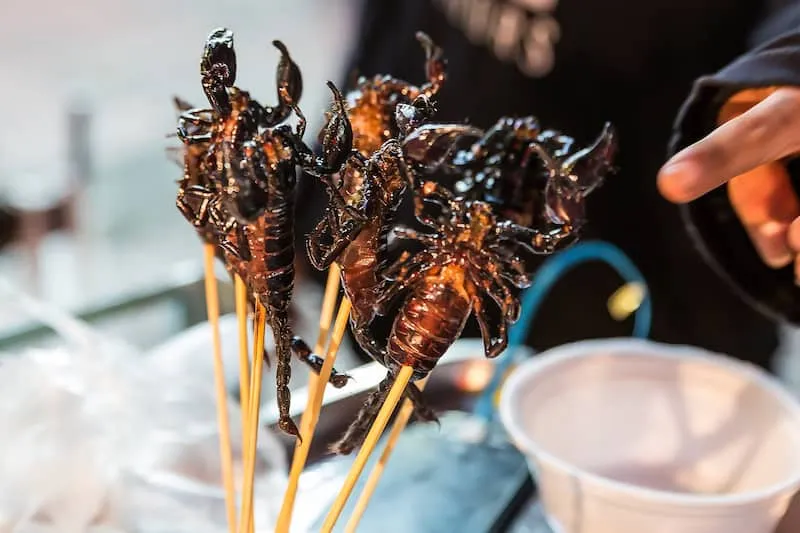
The texture of the Thai fried tarantula is a significant component of the overall eating experience. Typically, the texture is a contrast between the crispy exterior and a softer, more delicate interior. The legs and body are often crispy, providing a satisfying crunch when bitten into, while the abdomen might be softer and have a somewhat juicy texture. Some people say that the abdominal area can contain a paste-like substance. The overall texture of the tarantula can vary depending on the cooking methods, such as frying time and temperature. The blend of textures is what makes this dish an experience that differs from other typical dishes.
Safety and Consumption
Eating Thai fried tarantulas comes with some considerations, and it’s essential to be informed about potential risks and best practices for safe consumption. Although tarantulas have been consumed for generations in specific regions, it is important to recognize that not all practices are safe. Understanding how to ensure the tarantulas are properly prepared and consumed will help to ensure a safe and positive experience. Considering the origin, preparation, and potential allergens is very important before trying this unique dish. Careful attention to preparation methods, sourcing, and potential allergens is key to a safe and enjoyable dining experience.
Potential Risks and Considerations
There are potential risks and considerations associated with eating Thai fried tarantulas. One of the most important considerations is the origin of the tarantulas. It is important to know where the tarantulas come from and how they are handled. Contamination is a potential risk if tarantulas are not properly cleaned or if they are exposed to harmful substances. Allergic reactions are another consideration, as people who are allergic to shellfish or other insects may also react to tarantulas. Another consideration is the risk of parasites or diseases, as tarantulas can carry certain pathogens. Buying tarantulas from reputable sources is key to avoiding these risks. Awareness and careful food safety practices are critical to ensure a safe eating experience.
Best Practices for Safe Eating
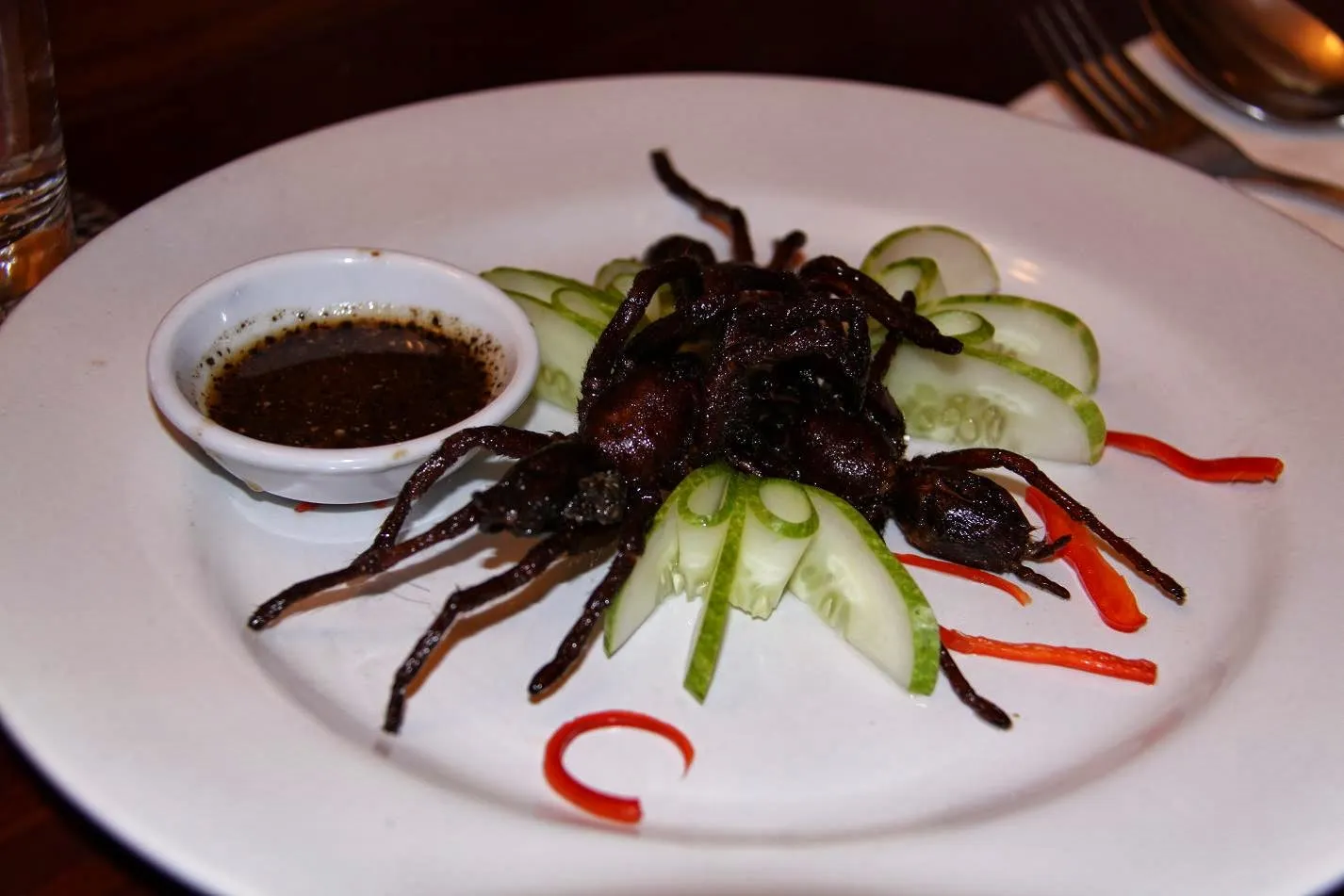
To ensure a safe and enjoyable experience, there are several best practices to keep in mind. Choose reputable sources that follow safe food handling practices. Look for vendors with clean preparation areas and high hygiene standards. Make sure the tarantulas are thoroughly cooked to eliminate any pathogens and ensure safety. Be aware of potential allergic reactions, especially if you have any known allergies to shellfish or insects. Start with a small portion to gauge your reaction before eating a larger amount. If you are unsure about the origin or preparation methods, it is advisable to abstain. Enjoying Thai fried tarantulas is a unique adventure, but safety should always come first. It is essential to make informed decisions and prioritize your well-being.
